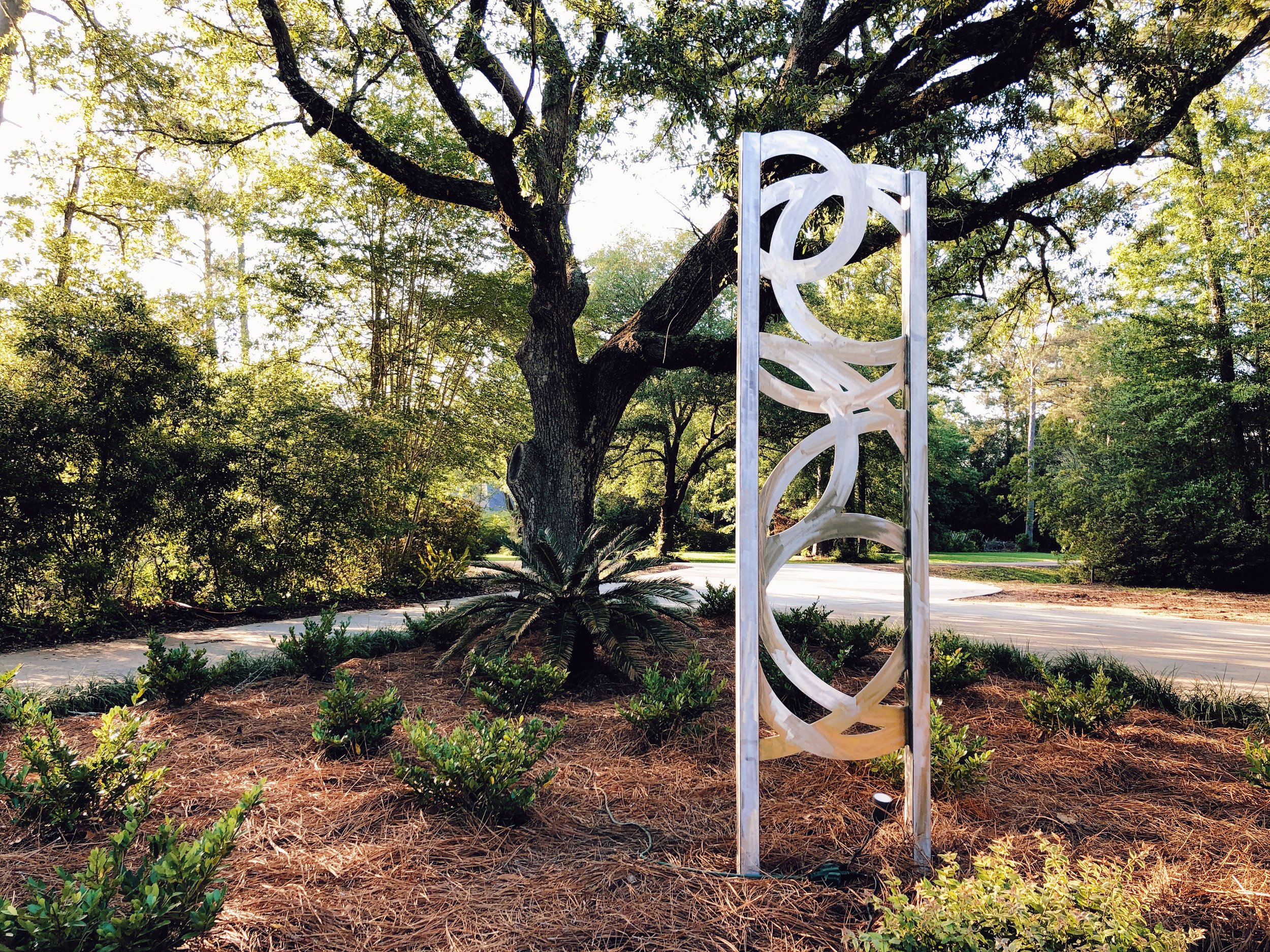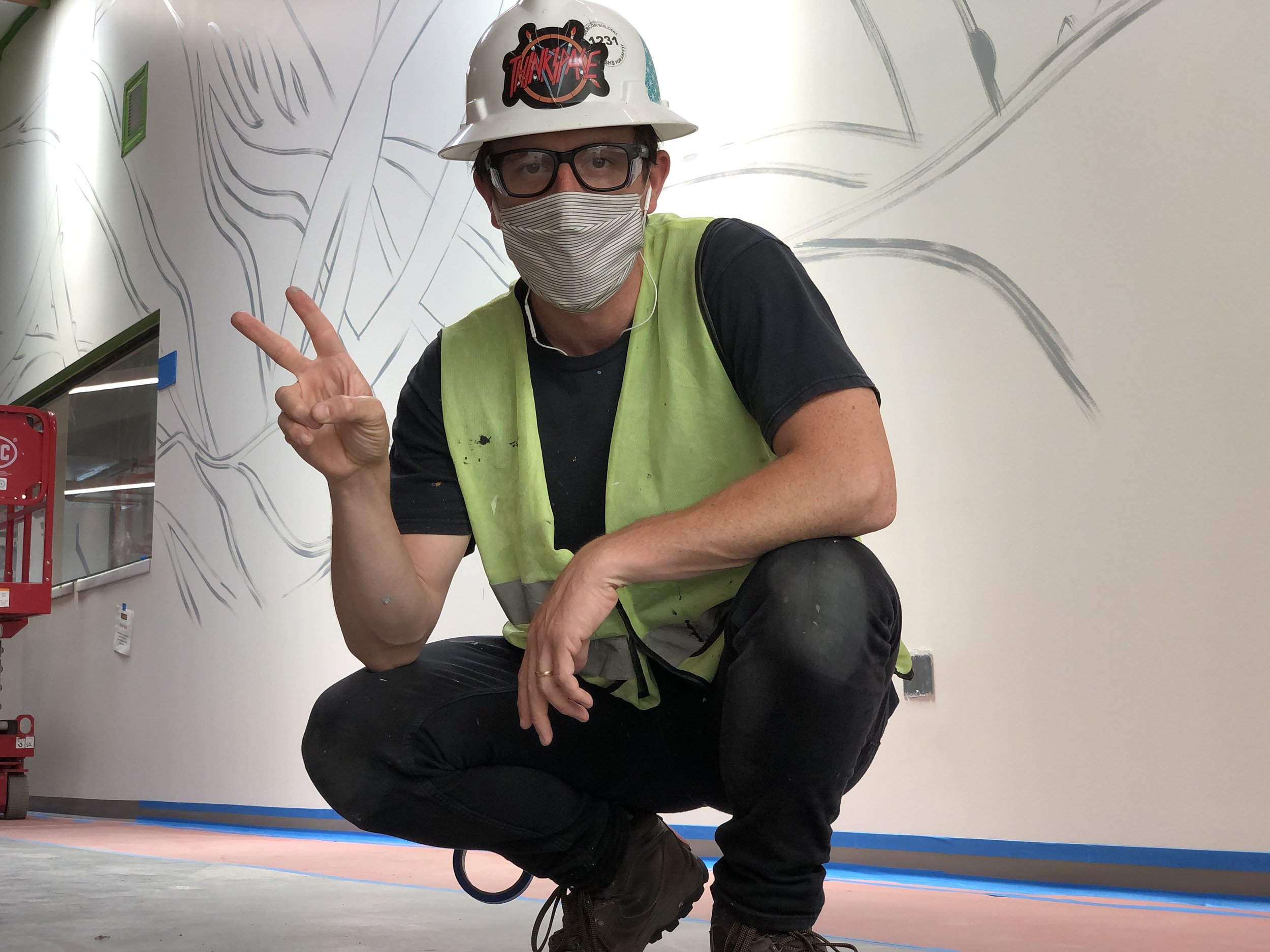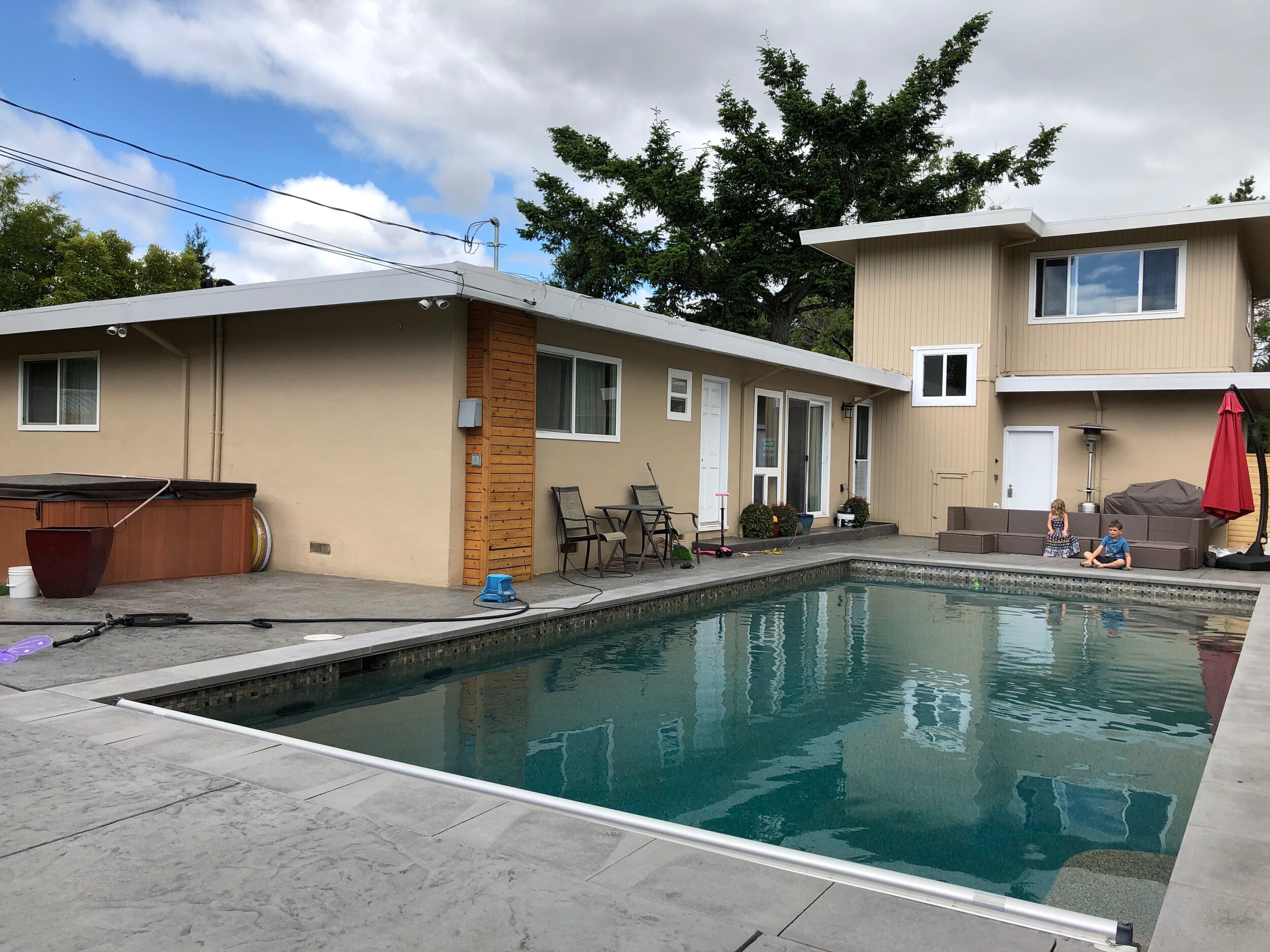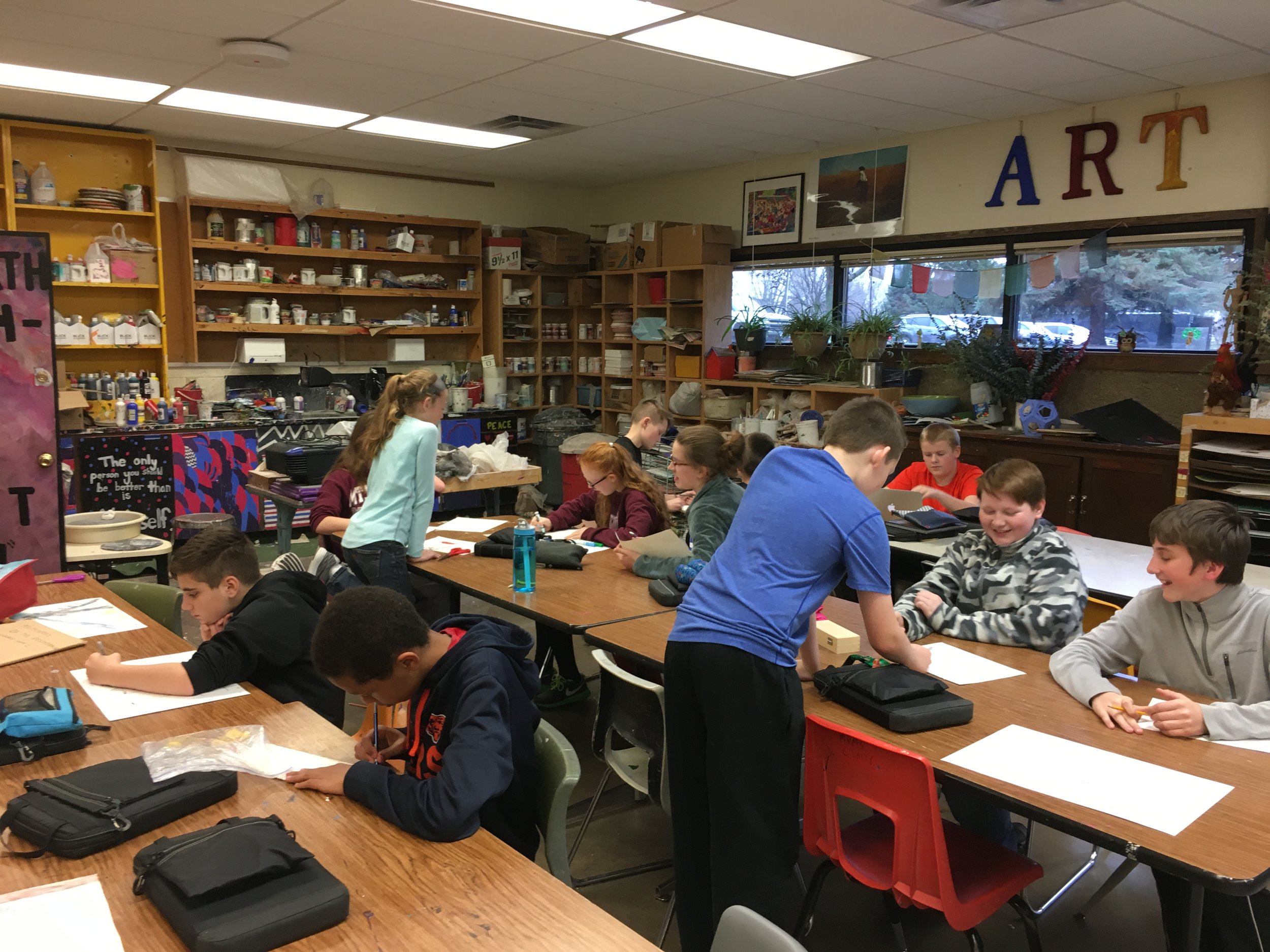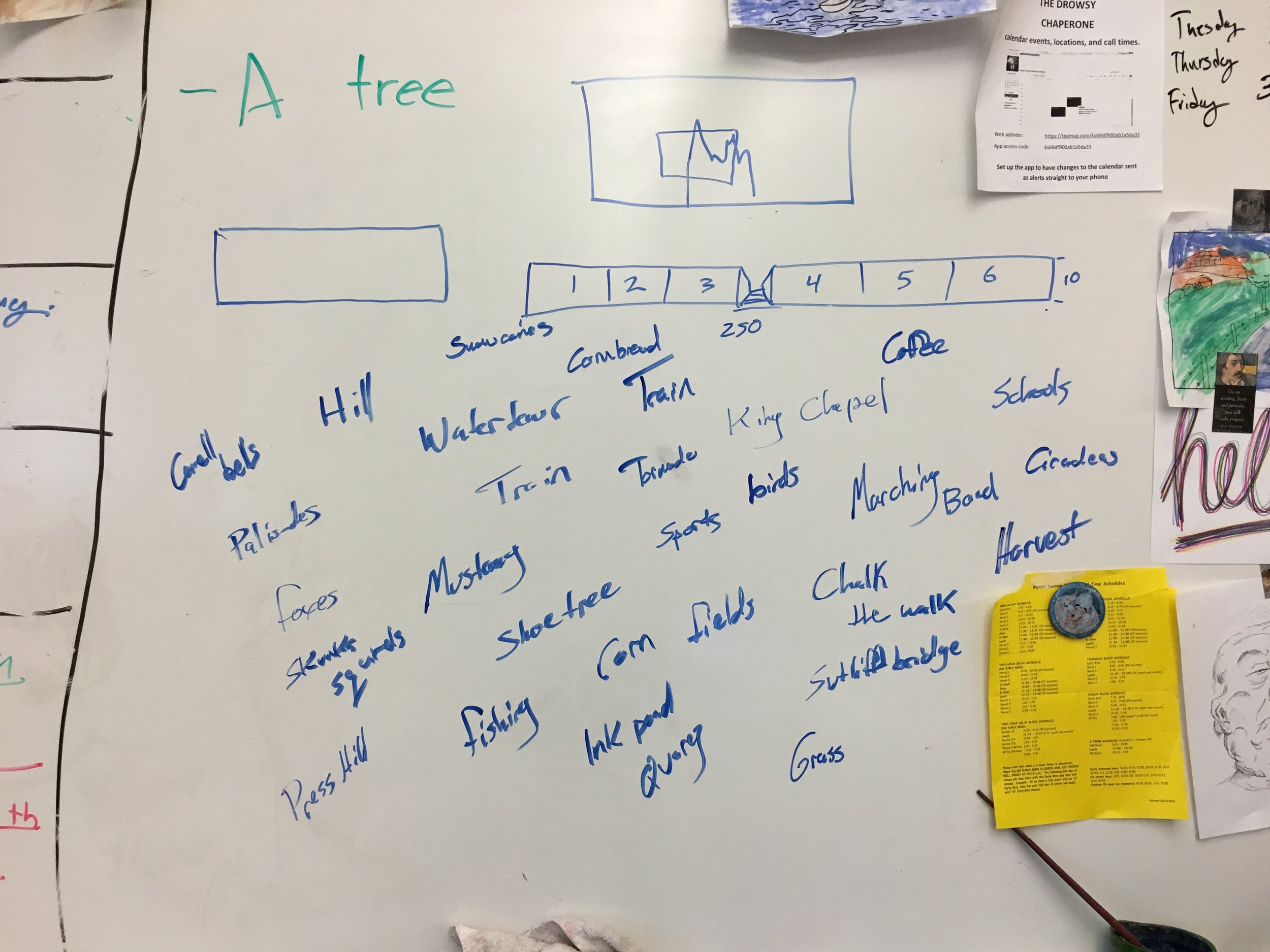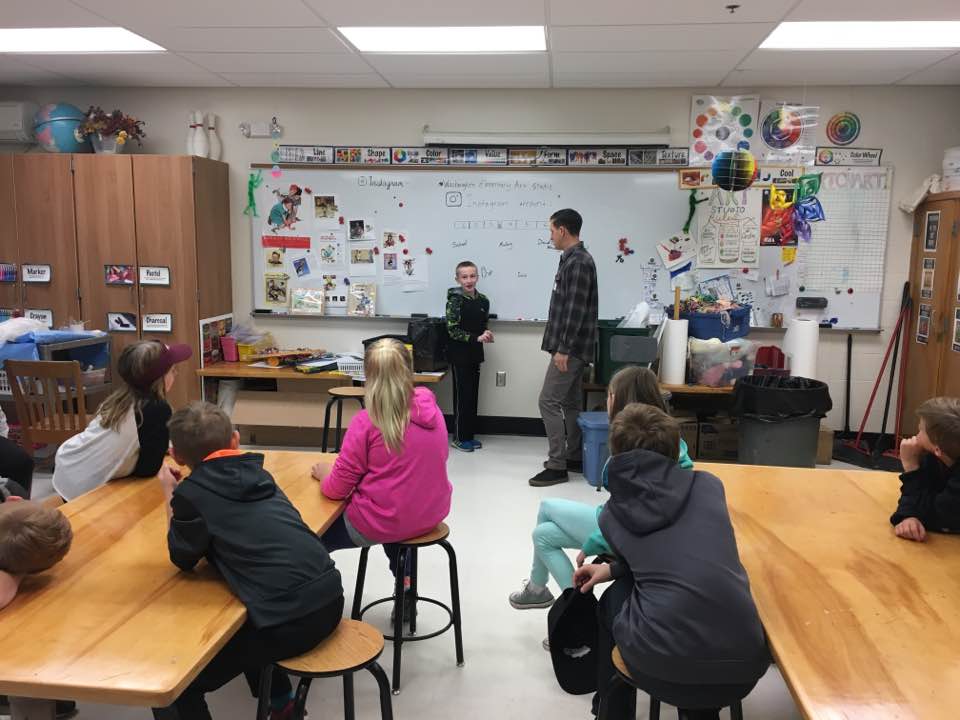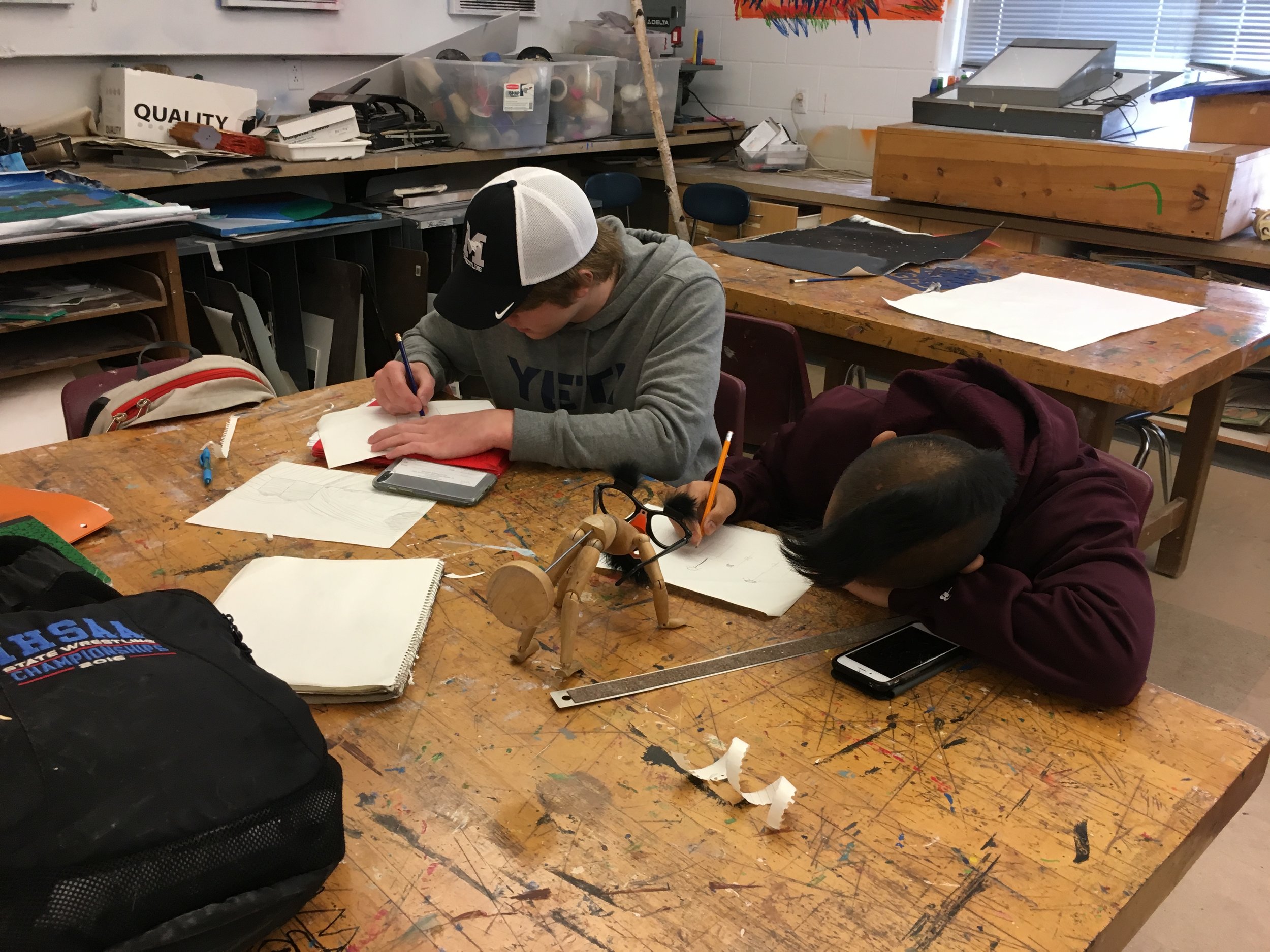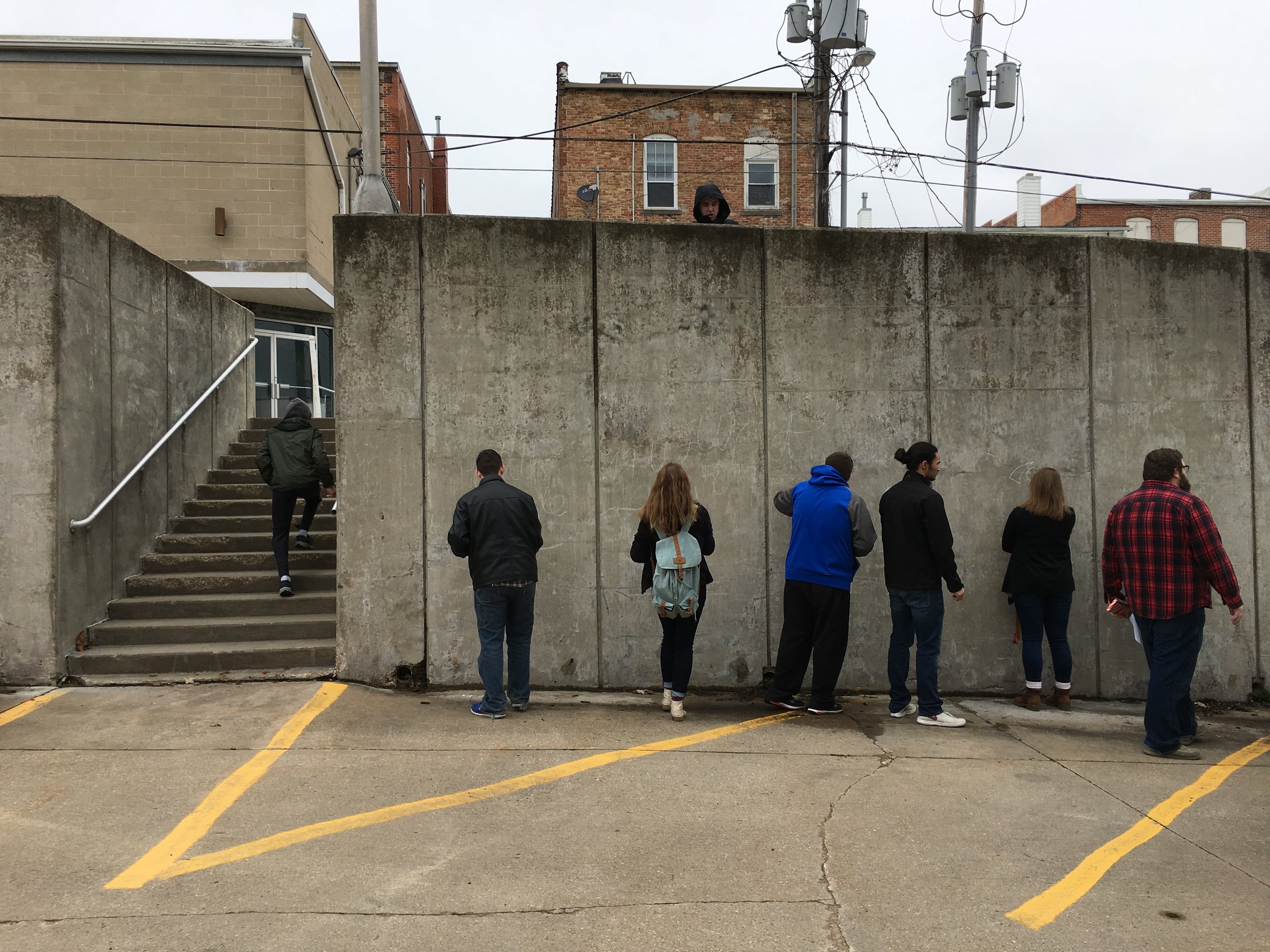In late 2024, I was invited to design a mural for a new biotech campus in Redwood City—an open, two-story lobby with a grand staircase at its heart. The client wanted something “uplifting, airy, full of movement”—a mural that would invite people through the space. Not just to decorate it, but to animate it. To pull people upward, around corners, and across floors.
We worked together to develop a palette that complemented the building’s architecture—soft teals, desert oranges, and warm neutrals that echoed the furniture, carpeting, and finishes throughout the space. My signature organic linework flowed from one floor to the next, anchored by a single pure white line that stretched from the ground floor up, gradually diffusing into thinner, fading lines—evoking air, energy, movement, and sound.
What surprised me most? The skylight above. And the western-facing glass wall that welcomed the afternoon sun. The mural glows at sunset. The color of the room changes constantly—soft lavender, dusty pink, golden green—transforming the mural every hour of the day.
What challenged me most? The sponge.
To achieve the soft watercolor effect in the background, I committed to a large-scale sponge technique—a method I’d only used for small sections in the past. I had to figure out just the right paint consistency and blending motion for it to scale properly. It took longer than expected, and more trial and error than I’d planned for, but the result? Absolutely worth it. Soft edges, layered tones, and just enough texture to make the wall breathe.
The client loved it. I loved it.
And maybe best of all—it moves. Not literally, but it moves with you. Up the stairs. Around the corner. Through the light.
It’s a mural you have to experience to understand.


















